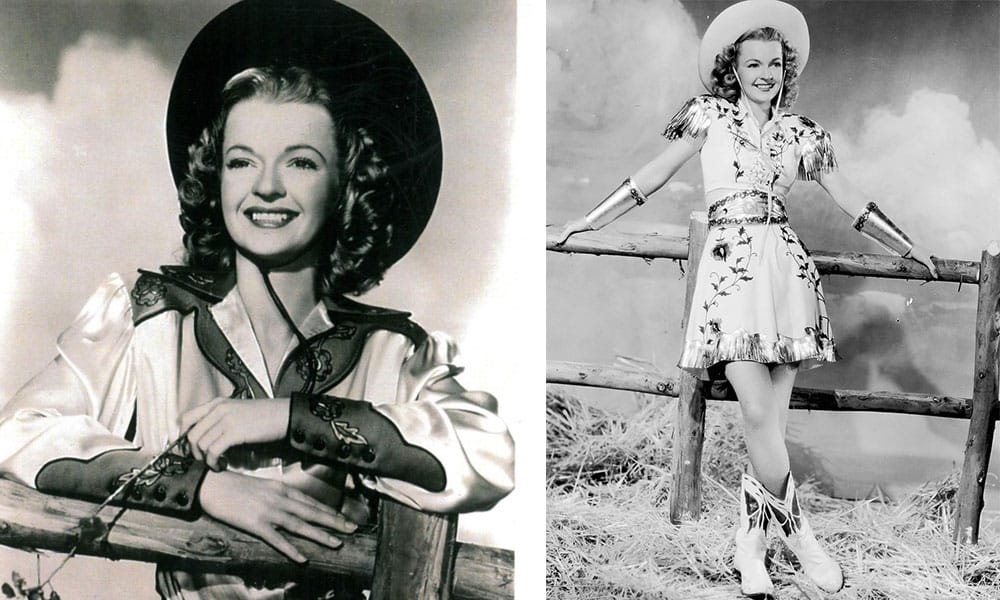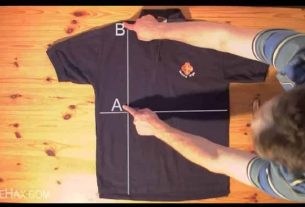The history of fashion arose with the European renaissance and since then has undergone numerous evolutions over the centuries.
Fashion has been following the habits of people since the middle of the 15th century, the beginning of the European renaissance. However, the history of fashion has its origin much earlier, around 600,000 years B.C. with the emergence of clothing. According to anthropologists, the emergence of clothing is directly linked to the need of the human being to hide nudity and also protect oneself from cold, rain or heat.
Thus, the skin of animals began to be used to make the clothes. And over time, the clothes were being perfected. For example, the rise of weaving in Mesopotamia. Where the clothes were worn wrapped to the body, being possible to dye the fabric of different colors. In Egypt, the clothes served to define identity and power, as well as differentiating each social group.

Moreover, the word fashion has its origin in the Latin ‘modus’, which means custom or habit. In short, from the Middle Ages the clothes began to be differentiated according to the social class. In fact, there were laws that restricted certain fabrics and colors only to noble ones.
In this way, the bourgeoisie, which was rich, began to imitate the style of dress of the nobles. This ended up increasing the work of the seamstresses, who had to produce different styles to differentiate the nobles from the bourgeois.
Since the Industrial Revolution and with the invention of sewing machines in 1850, the cost of fabrics has greatly decreased. With this, the humbler people were able to buy better clothes. However, even with modernization, women continued to wear bespoke clothes. This has caused haute couture to emerge, dictating trends throughout fashion history.
What is a fashion?

The word fashion comes from “modus”, in Latin, which brings as meaning the word “custom”. Moreover, fashion has been present since the beginning of humanity, when it was only a need for protection. That is, protect yourself from nakedness, and against cold.
Thus, in this period fashion represented something natural and unconscious that sought to express various symbols and meanings. In addition, over time, laws emerged that regulated consumption habits and rules of clothing of the population. Thus, it served as a way of dividing the social hierarchy, leaving explicit the functions of each group in society.
Fashion represents something other than just clothes. Therefore, it portrays the lifestyle, verbal language and culture of a people. Consequently it has become one of the greatest forms of expression and identity. Since it is based on something visual, it is quite explicit. Every costume carries with it the stories of generations and the moments lived throughout history.
On the other hand, many people confuse fashion with the mere act of dressing. In summary, clothing was a basic necessity from the first. However, fashion consists of the whole story behind every costume.
How did the history of fashion begin?

At first, according to anthropologists, clothing was related to the human need for protection. That is, the human instinct needed to hide the nakedness, protect itself from cold, rain, heat, stones and thorns, and possible animal attacks.
Men used the skin of animals to make their clothes. In addition, they had the aid of stones and needles, to make the leather softer. Or also, they dyed animal skin with plant extract and other forms of painting.
In short, humans wear clothes from 600,000 years B.C. What is proven through the excavations that found needles made of bones. Subsequently, weaving appeared in Mesopotamia. That is, the clothes were wrapped by the body and could be dyed of various colors.

On the other hand, in Egypt, clothes were synonymous with strength and identity. For Pharaoh did not use ornaments to differentiate himself from other people. But he wore a sym. of lion and a false goatee, which conveyed a sign of power and authority. Finally, in Rome, the magistrates used a piece called a toga, which meant authority.
Transformations throughout the history of fashion

The history of fashion has faced several transformations to this day. First, many societies did not differentiate women’s clothing from male. However, in the middle of the 14th century, women began to wear dresses and men pants.
Moreover, expeditions made to conquer Jerusalem and contact with the refined style contributed to the rise of the nobility. And, women’s clothing aimed to highlight the silhouette of women.
Later, in the mid-13th century, footwear was popularized in fashion. Thus, the shoes valued by women were those who highlighted the delicacy of the feet. In summary, the Renaissance portrays a period where the characteristics of the bodies were evidenced.
Therefore, men sought to wear clothes that would leave their shoulders visually wider. And, women wanted their bodies to resemble the guitar format. Then came the corpets, as women were worried about marking their waistlines.
History of fashion: The beginning

The history of fashion had its beginnings truly with the Renaissance period. For before that the clothes were not distinguished much from the other, having few differences between the peoples. In addition, plebeians could not wear clothes similar to which the nobility wore.
And, there were also laws that re-recorded the amount of gold and which fabrics would be allowed to them. Faced with rebirth, the commoners seek to imitate the clothes of the nobility, and in order not to repeat them, they begin to change frequently.
Subsequently, with the steady advance of technology and communication, clothes have evolved more and more. For example, through cinema, where transformations and styles were evident.
In addition, it also contributed to making the clothes and lives of the famous as an object of desire of the people who watched. Consequently, several trends have emerged, which have become a reflection of every historical moment in which they have emerged.
Extravagance in the history of fashion

King Louis XIV is well known in the history of fashion. Yeah, he had a rather fancy style of clothing. In short, his goal was to highlight his power and authority through his attire.
In addition, during his reign, the frames that gave volume in the skirts of the French women gained great volume. In view of this, historians claim that two women sitting on the same couch was almost impossible. The volume of his skirts was extremely large.
The father of “high-seight”
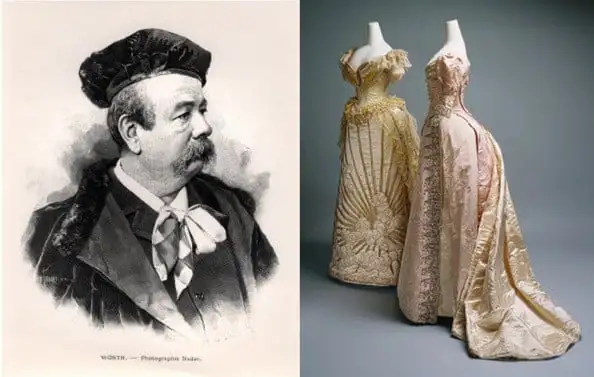
Also important in the history of fashion, we have the artisan Charles Frederick Worth, responsible for opening the first haute couture studio in Paris in 1858. In addition, this English designer is recognized by several feats, among them the one to replace crinoline with anquinha. That is, a frame that was used to give volume to the hips and the female back.
In addition, during the Belle Époque, the silhouette of Charles’ models made the most successful, being highlighted. In short, the style that stood out in the period was the hourglass body with volume in the shoulders and hips, and the thin waist.
Fashion in the First World War

The terrifying moment of the First World War has greatly influenced the history of fashion. First of all, comfort in clothes was prioritized. Since women had the function of working during the war, requiring more practical clothing.
On the other hand, there was also a shortening of the female skirts. For there was a shortage of fabrics in the textile factories, and it was necessary to shorten the skirts at the height of the ankle. In addition, the shapes of the hats were also diminished, and they fit well to the short haircut used at the time.
Finally, the grief resulting from the war influenced the tones of the clothes, leaving them darker.
The fashion in the Second World War

The Second World War also played a crucial role in the evolution of fashion history. A priori, in Europe, the birthplace of the great designers of the time, many stores had to close. In addition, women’s clothing took on a more sober and heavier appearance. And also, I was having the rationing of fabrics.
Therefore, synthetic fibers, viscose and radius served as alternatives to replace refined fabrics. Later, at the end of the War, in 1946, the ready-to-wear appeared. In short, it consisted of a kind of production on an industrial scale that allowed a single model to have several numbering. Then this concept was taken to France, being named as ready-to-wear, revolutionizing the concept of fashion.
Subsequently, in 1959, the French-ictalo Pierre Cardin developed the first ready-to-wear collection, in partnership with the Parisian department store, Printemps. Thus, the goal was for consumers to choose their piece according to their numbering.
The Channel in the History of Fashion
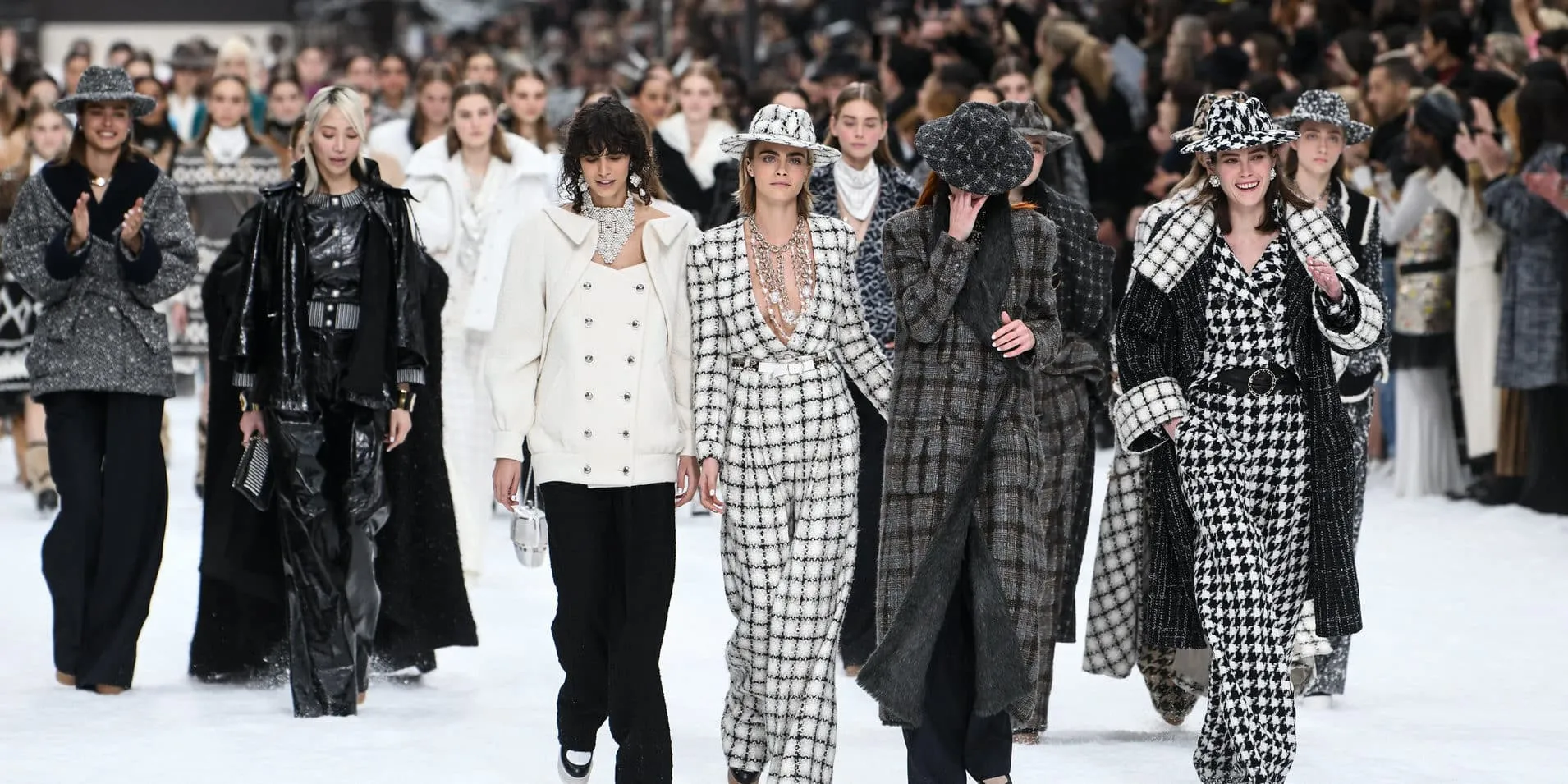
Quite well known in the history of 1920s fashion is Gabrielle Bonheur Chanel, the modern stylist. At first, Chanel’s fashion began in 1910, when he worked in a hat shop. It later became the owner of two stores, where she sold hats and clothes. And, your store in Paris remains to this day, located at the 31st of the Rue Cambon of Maison Chanel.
In addition, his story was marked by a great love, named Arthur Capel, known as Boy. He contributed to Chanel opening his first hat studio, and also financed the brand’s boutiques. However, her great love ended up dying in a terrible car accident, which made her very sad.
In short, his brand was focused on an elegant and minimalist style. Moreover, it is believed that it was so successful that in 1930 it earned a figure of 130 million francs. In 1919, Coco Chanel developed the Black Dress, which consisted of a black crepe dress with long and tight sleeves.
Given this, the look was marked a daring appearance, due to its black color. Since black was used in haute couture for moments of mourning. And in October 1926, American Vogue described the “basic blackness” as the “Ford” of Chanel. That is, the whole world would know and use such a piece. In addition, the comparison is based on Ford’s T model, which had strong commercial appeal.
The International Success

On the other hand, the aspects of simplicity and the use of utilitarian fabrics are based on the humble life that the designer has lived until her 20s. However, in 1930 she achieved international success, with the support of famous Hollywood actresses, who used her brand’s models.
In addition, the Second World War affected its mark. Since, during the wars, people gave up fashion, they focused on surviving and buying what is needed. Therefore, only perfumes and accessories were sold in the store of Rue Cambon. Then, in 1954, the designer returned.
Therefore, costumes such as black dresses, pearl accessories and cardigãs have become the brand of Chanel. Therefore, being a fundamental part of the history of fashion.
Dior in the history of fashion

The history of fashion is also marked by another very important name: Christian Dior. At first, the launch of the “Carrole” collection marked the fashion. For, his collection featured skirts at the ankle, voluminous dresses, round skirts, and models that set the waist and had shoulders on display.
In addition, the success of his collection was named by the publisher of the American magazine Haper’s Bazar, Carmel Snow, of “New Look”. Thus, the piece named was the model “Tailleur Bar”, a coat of sedated belted with a black plea skirt at the height of the ankles.
In this regard, Dior’s goal was to rescue the elegance of the feminine clothing that had been lost throughout the wars. Therefore, Christian Dior became known as the postwar fashion revolutionary, bringing her back.
On the other hand, Dior contrasted strongly with Chanel. Since it featured extravagant and creative pieces, while Chanel possessed greater elegance and simplicity.
Later, in 1957, the designer died, at only 52 years old. And, the young Yves Saint Laurent was responsible for assuming the position of artistic director of the brand. However, he took office for a short time, but developed large collections. For example, the collection Line of the Flese of 1957.
Fashion in the 1960s: Hippie movement and freedom of expression
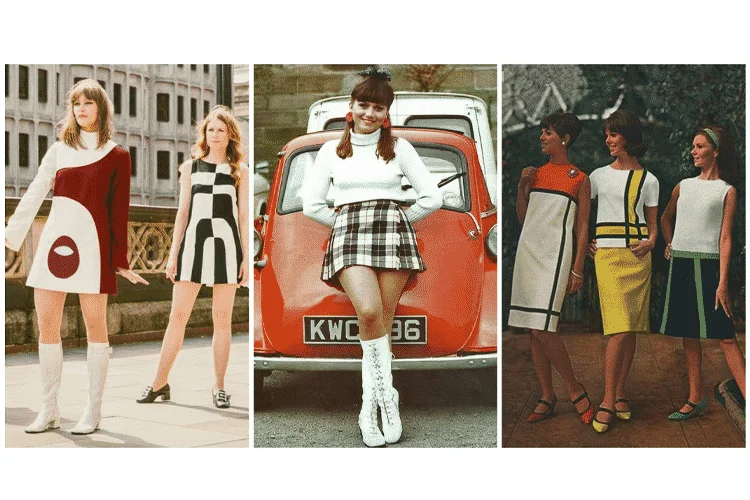
The 1960s were marked by freedom of expression and pattern breaking, and used fashion to demonstrate their state of mind. Moreover, the goal was to get rid of everything that referred to the authoritarianism present in the times of war. And, something that marked that decade was Rock’n’roll and the bold steps of American singer Elvis Presley.
In short, 1960 had as characteristic costumes leather, jeans, sumptuous carpets and scooters. And, Hollywood actors, like James Dean and Marlon Brando, were style references. Or also, the Beatles, who wore elegant clothes, such as thin-mouthed pants and collared jackets, and haircuts typical of young people.
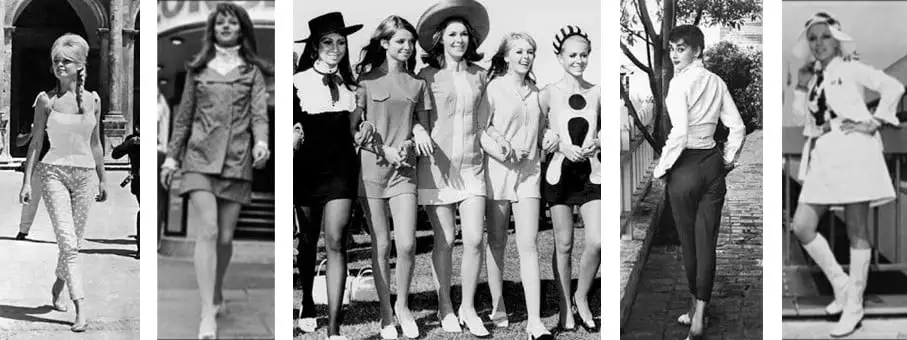
On the other hand, this time represents the first time that young people did not dress up like their parents. Thus, the miniskily became popular, being linked to youth and sexual revolution. And, it was developed by the designers Mary Quant and André Courr?ges, claiming to be a piece of the streets. In line, Jean Seberg, Audrey Hepburn and Natalie Wood stood out at the time, and the luxury doll film launched several fashions and trends.
In addition to the miniskirt, the cigarrete pants also gained female prominence. Given this, in 1965, the collection of the French André Courr?ges appeared, which contained miniskirts, white boots and dresses with straight cut. And, the Saint-Tropez style pants, where the navel is visible, appeared in the fashion of the time. Finally, unisex clothes were also heavily worn, where women wore jeans and shirts without collars. For example, the female tuxedo, developed by designer Yves Saint Laurent.
The History of Fashion in Hip-Hop
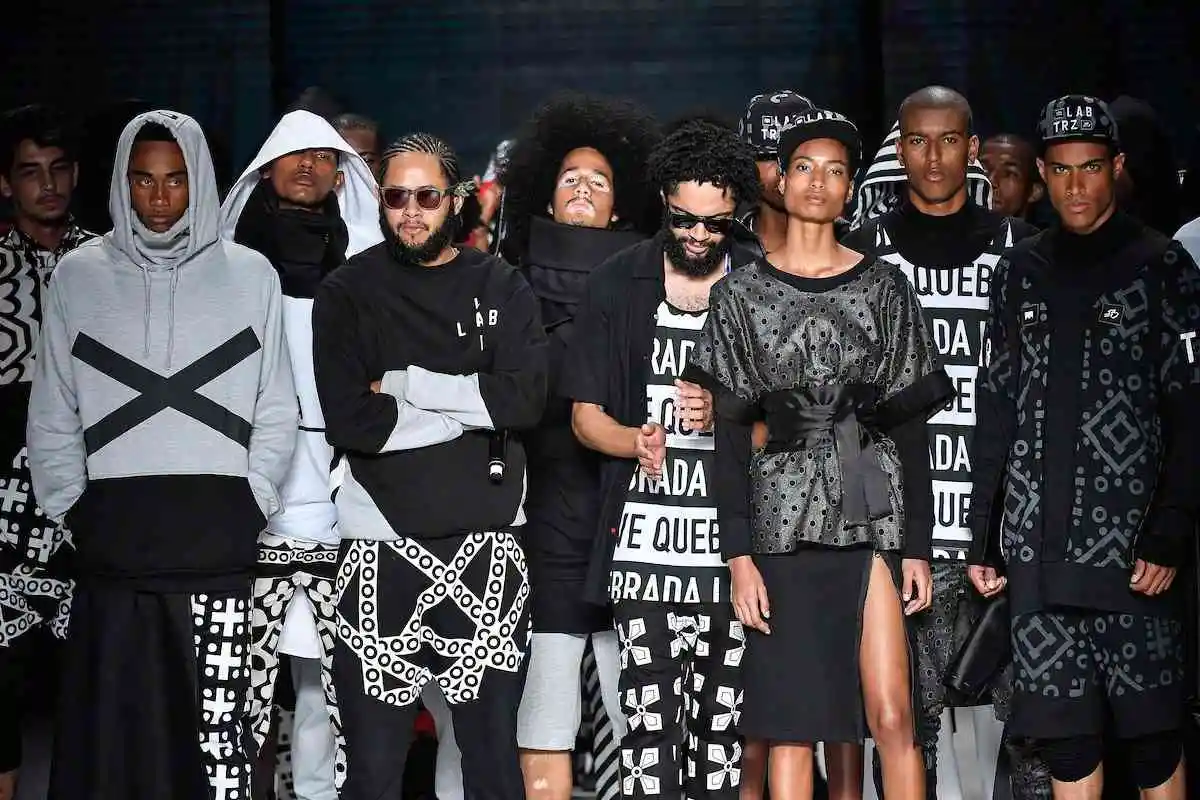
The hip-hop movement emerged in the late 1960s and lasted until the early 1980s. In short, the movement was focused on African-American culture, and concern about the social problems faced by urban populations.
Therefore, it is notorious that this movement impacted the history of fashion. Since clothes in kente fabric, and colors such as green, black, yellow dominated the wardrobe of the time. In addition, in 1989, Karl Kani developed the first company specializing in hip-hop culture clothes, with a brand with his name.
However, artists such as LL Cool J, Public Enemy and Run-Dmc have assisted in the spread of sports and street clothing. Soon, traditional brands began to be rejected by the hip-hop community.
Fashion in the 70s: Glam rock, disco and punk

In 1970 fashion was marked by pieces such as dresses, accessories and bell-mouth pants. In addition, the hippie style began at the end of 1960, and prevailed until 1975, bringing influences in haute couture. That is, with flower accessories, tunics and embroidery.
In addition, music has also had an influence on the history of fashion, such as punk, disco and street styles. Although the Punk movement opposes consumerism, the designers were inspired by the pieces and accessories used by their supporters.
For example, studs, graffitied t-shirts, black leather clothes, boots and pins. At first, this movement arose in 1976 in London, with young unemployed and student followers.
On the other hand, several names became popular, such as: Calvin Klein, Jean Paulo Gautier, Claude Montana, Kenzo, Giorgio Armani and Ralph Lauren. In short, his creations valued a more concise wardrobe, suitable for professional women.
The Glam Rock

The Glam Rock movement emerged in the 1970s in Britain. Moreover, it was with this movement that the theatricality and eccentricity in the history of fashion occurred. In short, it is marked by a lot of exaggeration, with sequins and tight tights.
Thus, artists who stand out are: Elton John and Marc Bolan. Or also, the androgylum of David Bowie, which exhibited looks designed by Japanese designer Kansai Yamamoto. In line, it was recurrent the use of platform shoes, hand-dyed mullets, patterned dresses, facial and body paintings, feather soaks, elaborate vests and sequin jackets.
Finally, Barbara Hulanick’s Biba boutiques and Alkasura propagated glam rock fashion.
The discotheque style

The disco movement stood out in the late 1970s, where Latin music, funk and soul influenced fashion history. In short, sequined tops were used to fall from sequins, lurex neck dumbbell blouses and tights. In addition, the film “The Saturday night pills” also impacted fashion. Yeah, he propagated the style of the disco.
Faced with this, the streets were filled with synthetic elastic fabrics, spandex dresses and high-heeled shoes with short socks. Therefore, the style was widespread in the United Kingdom, with the support of the Swanky Modes brand, which had sexy pieces made in lycra. Finally, Glam Rock and the discotheque ended in 1976, when Punk rock appeared.
the punk rock movement
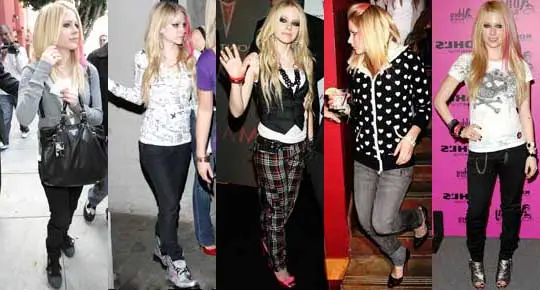
First, the influences of punk rock emerged in the United States. However, it became a phenomenon in London. In short, the Punk movement brought together elements of loud and aggressive music with clothes of the same aspect.
Therefore, it consisted of a movement of indignation, self-expression and experimentation. In therefore, this style was propagated by the Sex store, where the owners were Vivienne Westwood and Malcolm MacLaren. In addition, the band Sex Pistols became popular, and their clothes provoked great curiosity. And, the designer Westwood incorporated pieces such as “straw Shirts,” “threattas destroyed,” “bone pants” and “agonist trucks.”
However, the designer did not have training in fashion design, which made all the looks very intuitive. Thus, one of his techniques was based on cutting the tissue in the body itself without the use of flat surfaces. For example, the use of torn T-shirts, the technique of which was this.
Finally, the colors used were red, black, white, fluorescent pink and blue. In addition, it also had plaid prints, with modernist urban themes and Celtic history.
The 80s: Decade of exaggeration

The 1980s were marked by much exaggeration in fashion. For, pieces such as shoulder pads, overlays, vinyl and various colors became popularized. Moreover, the hippie movement and the opposition to consumption was set aside. Therefore, investing in pieces of great designers was the peak among the young people of the time.
At first, there was a greater presence of women in senior positions, influencing female tailoring. For example, appearing in suits with more marked shoulders. In view of this, the German company Hugo Boss gained international prestige with the fame of the suits.
In addition, the ready-to-wear suit, made with quality fabrics and a more masculine silhouette, left Hugo Boss in the fashion spotlight. Also, the brand starred in the first cases of merchandising. And, his label was seen in Miami Vice, one of the most famous series of the time.
On the other hand, the industry sought to influence young professionals to consume accessories such as the Rolex watch, Gucci moccasin and the Filofax agenda. In line, fiction has also helped in the development of a more glamorous lifestyle. That is, TV series, like Dallas and Dynasty, had interesting costumes, which drew attention.
The ostentation of the 1980s

Some historians point out that the 1980s were marked by clothing and ostentation. Since the deregulation of the financial market by Reagan’s policy and fiscal reforms influenced the increase in income of the wealthiest classes of the United States. In addition, the luxury bag began to be seen as a collection article.
Soon, American women opted for refined clothing from the brand Carolina Herrera for daytime looks. And, for night events they chose luxurious pieces from Arnold Scaasi. Thus, the history of fashion faced strong moments in this period.
This was the first time that clients and designers had mixed up in social events. For example, the designer Oscar de la Renta, who was circulating through several events and was invited to formal receptions in the White House.
Fashion in the 90s: Diversity of styles

The fashion of the 1990s is marked by much diversity, where different styles and compositions coexisted together. Therefore, colorful jeans and second skin blouses were strong trends. Thus, the music also marked this period, Grunge, subgenre of rock, influenced the styles. Faced with this, more stripped pieces, such as pants, wide shorts and plaid T-shirts were very present in the looks of young people.
In addition, a landmark in the Grunge style went to the Marc Jacobs collection, for Perry Elis, the American sportswear brand. In short, the collection was seen as a failure, and consumers did not like it. Yeah, he had a very sloppy character. On the other hand, the fashion of this decade was marked by rereadings of the 60s, with light colors, and 70s, with platform shoes.
History of fashion: a globalized world

All these trends over the years have marked the history of fashion. In addition, many of these old pieces go back to its peak and become popular again. In line, the history of fashion was strongly impacted by globalization. For, through it it has become easier and easier to stay on top of the trends that are all around the world.
In globalization there are no barriers or borders, and fashion has become more accessible and visible to all. In addition, consumption became faster, being possible to negotiate with all countries. Therefore, production in industries has also become large and more technological. And, import and export modernized the market.
On the other hand, it is notorious that fashion always reinvents itself and adapts to the moment lived. For example, in 2020 the Covid-19 pandemic emerged, and with this came garment deliveries. That is, the Upperbag brings fashion to you in your home. For, with the rush of everyday life, or with the need for distancing required by the pandemic, shopping in stores has become difficult. This way, the delivery delivers your order in the comfort of your home.
Sustainable fashion

A new concept in the history of fashion is sustainable fashion, something very important in the current scenario. First, sustainable fashion represents precautions during the production of clothing and accessories to avoid serious damage to the environment.
In this way, recyclable, natural and organic materials are used in the making of clothes. Therefore, companies stand out by creating trends and still collaborate with the health of the environment.
In short, the main objective is to protect natural resources, animals and society. In addition, it also values the people involved in production, encouraging conscious consumption. Therefore, following these principles, people are induced to work with raw materials that are produced sustainably.
What are the trends?

You’ve probably heard the term trends. In short, they help us understand what the consumer preferences are around the world. Moreover, this is crucial information for big brands. Through them, brands position themselves and develop things that can succeed in the future. In fashion there are 3 ways of a tendency to be born:
- Drip (from the English trickle down): It consists of the trends that arise from the big brands. For example, when Dior, Versace, and Chanel launch a trend, and other smaller brands reproduce pieces in the same style. So, reaching the various layers of society.
- Boiling-up represents the trends that are born from the streets. That is, they start in the lower classes and become popular around the world. For example, the Punk style, which was a proposal that was born to go against the current fashion of the time.
- Gotejar (trickle-across): These are the trends that are popularized horizontally. That is, fashion is born in different ways, in different social classes.

Finally, it is possible to analyze that some trends last for a long time, and others for a short time. Therefore, this will vary according to the popular taste and influences of the media.
After all, the history of fashion is constantly evolving, changing according to the customs and behaviors change.
So if you liked this article, read also: History of Balenciaga and its empire of luxury and glamour.
Bibliography:
DANTAS, Gabriela Cabral da Silva. “The Emergence of Fashion”; Brazil School. Available at: https://brasilescola.uol.com.br/curiosities/o-emergence-moda.htm. Accessed on January 5, 2022.

Sign up for our newsletter and stay up to date with exclusive news
that can transform your routine!
Warning: Undefined array key "title" in /home/storelat/public_html/wp-content/plugins/link-whisper-premium/templates/frontend/related-posts.php on line 12
Warning: Undefined array key "title_tag" in /home/storelat/public_html/wp-content/plugins/link-whisper-premium/templates/frontend/related-posts.php on line 13

